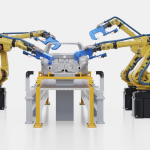As global freight rates normalize, a quieter form of inflation is creeping into procurement portfolios. From Vietnam to Mexico and across Eastern Europe, wage floors are rising, overtime restrictions are tightening, and cost pass-throughs are accelerating. For procurement teams that recalibrated sourcing strategies post-freight crisis, labor volatility is now the variable reshaping cost baselines.
Freight Isn’t the Pressure Point Anymore
After two years of battling ocean rate spikes and chassis shortages, many sourcing organizations are now facing a different squeeze. Labor-intensive categories, textiles, electronics assembly, food processing, are under renewed pressure as factories revise wages in response to both inflation and regulatory shifts.
In Romania and Poland, labor costs rose by more than 10% year-on-year through early 2025, according to Eurostat, driven by minimum wage reforms and labor migration. Vietnam’s new regional wage zones, adjusted in January, introduced a 6%–9% increase across industrial zones. Mexico, meanwhile, raised its federal minimum wage by 20% this year—the fifth consecutive double-digit hike.
These wage hikes are not easily absorbed. Suppliers in these regions are already operating at thin margins, and many are passing on costs directly through pricing updates or surcharge clauses. What complicates matters is timing: just as buyers expected margin relief from stabilized container rates, labor is reintroducing cost friction in the least automated segments of the supply base.
Reworking the Labor Exposure Model
Labor volatility is proving harder to model than freight. While container rates are indexed and publicly tracked, labor inputs often hide within bundled BOM quotes or opaque service-level agreements. That opacity leaves buyers exposed to retroactive price adjustments—or worse, mid-contract renegotiations justified by wage mandates.
To stay ahead, leading procurement teams are now deploying labor intensity indexing in their total cost models. This means assessing not just where a supplier is located, but how labor-dependent their operation is per unit delivered. For instance:
Labor-Cost Attribution Mapping: Breaking down per-unit pricing to isolate how much cost is labor vs. material vs. logistics—then modeling that exposure against projected wage increases in each geography.
Task-Level Automation Proxies: Using supplier questionnaires or plant audits to gauge automation maturity—especially in high-touch processes like final assembly, inspection, or packaging.
Scenario-Based Cost Buffering: Building tolerance thresholds into cost models that simulate a 5%–15% labor hike and score supplier quotes on their resilience.
Some companies are also revisiting regional hedging strategies. By splitting volume between, say, Vietnam and Indonesia or Mexico and Guatemala, buyers can test cost stability in real time—minimizing disruption if one labor market tightens unexpectedly. Others are actively rescoping supplier portfolios based on labor elasticity, prioritizing vendors with more flexible shift models, seasonal scalability, or partial automation capabilities.
The Next Blind Spot: Labor Regulations and Compliance Drag
What many cost models still miss is the regulatory overhang of rising wages. As governments introduce not only pay hikes but also stricter enforcement on benefits, safety, and hours worked, the indirect cost burden is growing, especially for suppliers operating in multiple jurisdictions. For procurement leaders, ignoring compliance drag could result in a second wave of hidden inflation. A more robust labor strategy may not just protect margins, it may shield companies from compliance blowback.





